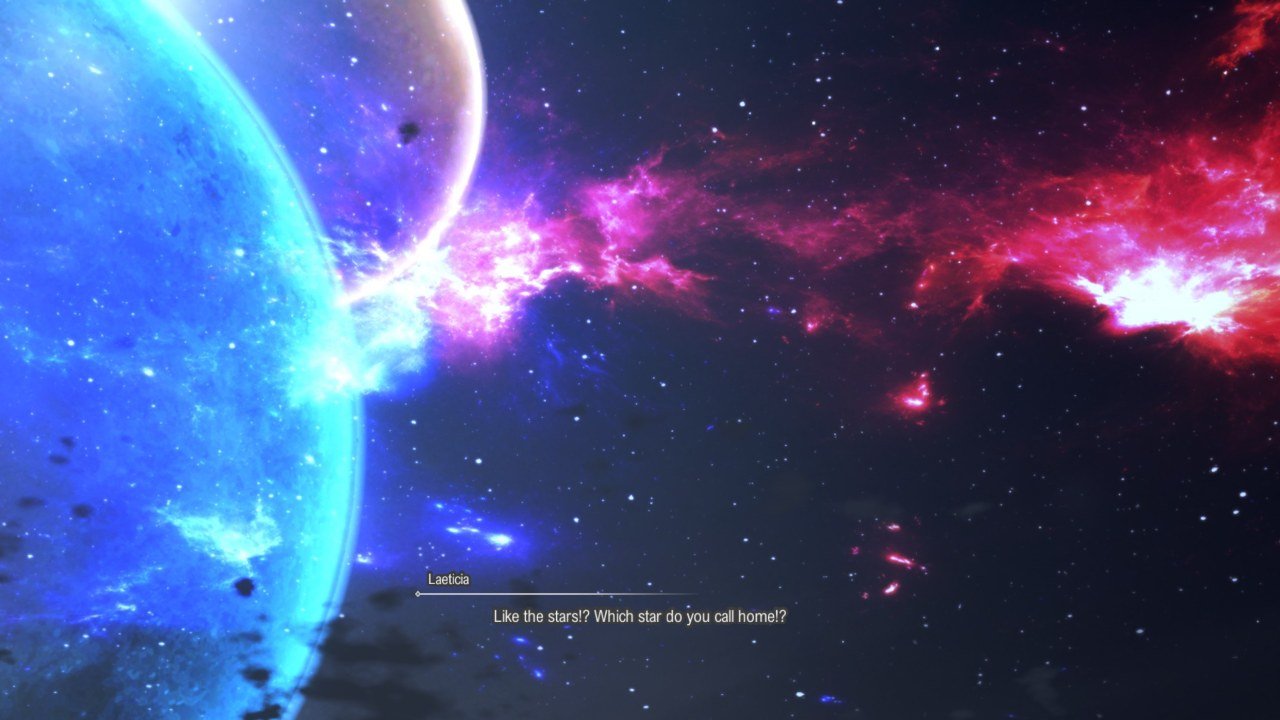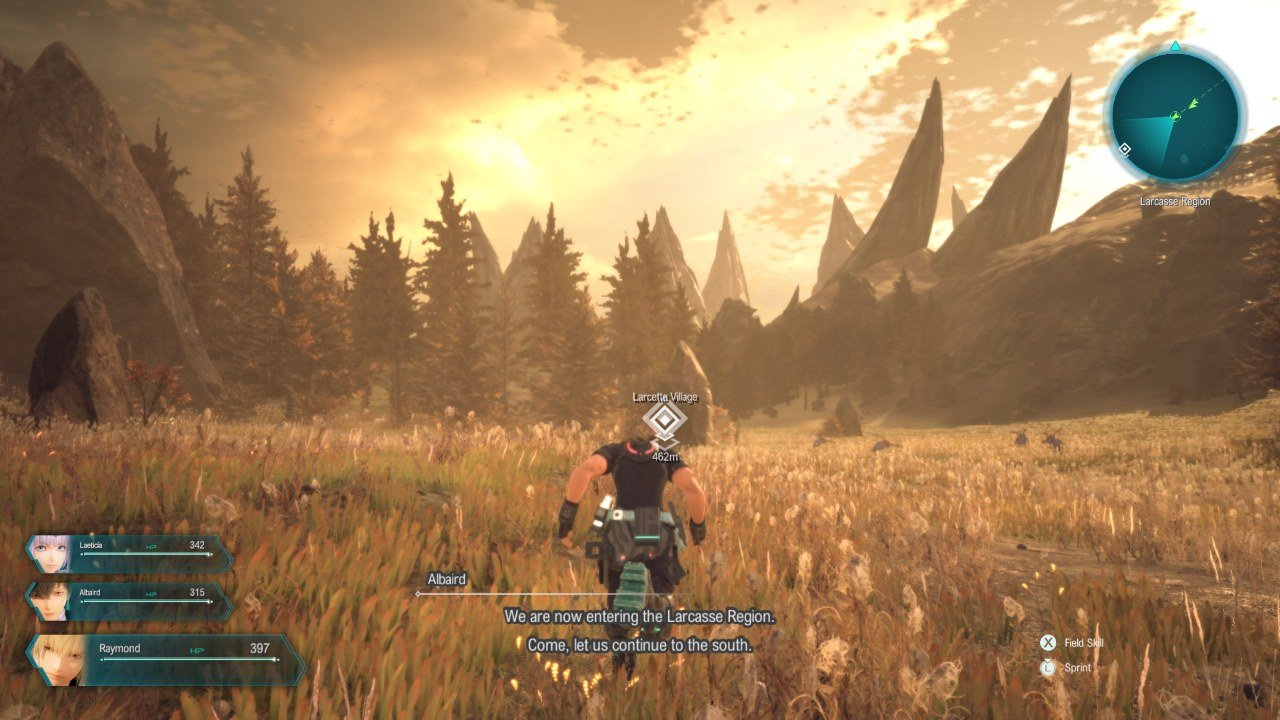PC review code provided by Square Enix
Star Ocean as a whole is a series I have a lot of respect for. My last experience of tri-Ace and Square Enix’s RPG series was the superb Star Ocean Till The End Of Time on the Playstation 2. It still ranks as one of my favourite games on the console. While I was aware that the series has had a bit of a slump since I had high hopes for its new entry Star Ocean The Divine Force.
Story
For those not familiar with the Star Ocean franchise, the base premise is pretty easy to grasp. The universe has advanced, space-faring civilisations, but also underdeveloped planets that are still around the medieval period. Mostly, these two worlds do not interact, but when they do, the plot of a Star Ocean game tends to happen.
In the case of The Divine Force, the story follows two protagonists on either side of the coin. You have space captain Raymond Lawrence, whose trading ship the Ydas is attacked, and its crew is scattered on an unknown planet. On the other side, you have Princess Laeticia, a royal-turned-knight from the feudal planet in question who is sneaking around questing with her stick-in-the-mud retainer Albaird. The two heroes run into each other when Raymond’s escape pod touches down near her Highness’ camp. They decide to join forces to try and make their respective goals more achievable.
One of the game’s gimmicks is the dual protagonists, with some of the story you’re exposed to being different depending on who you’re following at the time. While it’s a cool idea, in theory, I soon started feeling like I would prefer the focus to just switch between parties during splits. A lot of the time it just seemed to lead to me feeling like I was missing half the story and having references to events I knew next to nothing about.
The characters aren’t grating or annoying to travel with, though I didn’t find any of them really grabbed me in the way they could have. The dialogue doesn’t do them a lot of favours as it often seems to repeat the same points numerous times. There are some moments that are quite fun though. The medieval characters being perpetually confused by technology is a little endearing. Of the two protagonists, I found Ray more enjoyable, as his problems felt more immediately relatable.
Gameplay
For players of RPGs, a lot of The Divine Force’s core gameplay will be pretty familiar. You wander around an open world, following various objectives and advancing the story. Sometimes the party will split, and you will follow your chosen hero on their half of the adventure.
The combat is an action RPG affair, though with some caveats. You are able to run around and attack freely but are limited by your AP bar, which depletes as you hit. When it is empty, you can’t strike. This might sound in theory like a stamina bar in the being of a Souls game, but the experience is very different. You are still able to dodge, even with no AP, so it lacks the risk-and-reward element stamina-driven combat generally has. Instead, you’re generally incentivized to wail on your opponent until you can’t anymore, then zip away. It results in an oddly stop-and-start approach to fighting that didn’t feel too smooth, though it becomes easier and less of a problem as you go. Aspects like taking an enemy by surprise increase your AP and freeze them for short periods, which is actually a really cool idea.
One of the more unique mechanics that The Divine Force brings is DUMA, a little floating drone that hovers around behind your character and bestows some extra abilities. In combat, you can use DUMA to fly across the field and slam into an opponent, potentially blindsiding them for a bonus. Out of battle, DUMA can be used to fly and glide for short distances around the map. This is a really fun mechanic, but it feels like the world itself lets it down.
The open world of The Divine Force feels like the epitome of an open world that does not need to be one. It looks nice and has some good ideas, but is seriously lacking in things to explore. What really saddened me was it felt like stretching the environmental resources too thin had impacted other parts of the world too. As an RPG fan, I felt a terrible sense of loss when I reached a town and, even on being asked to speak to the locals, I wasn’t able to go and talk to all the random residents. I could challenge a few to the world’s minigame, and speak to the one man who had quest relevant information. Not being able to strike up conversations with random commoners honestly felt weirdly jarring for a JRPG.
Audio and Visuals
The visuals are, for lack of a better word, strange. While the scenery looks very pretty the character models have been subject to some truly bizarre design choices. The models seem to resemble action figures, and move about as convincingly. Laeticia’s design in particular seemed distractingly off, something other female characters seemed to avoid.
While most of the gameplay animations looked decent enough, cutscenes seemed to frequently descend into the uncanny valley. The characters present seem to gesture in rather unnatural, wooden ways that are probably more distracting than if they’d simply idled while talking.
The music is genuinely well done, and some of the tracks were stand-out enough for me to pick them out while playing. There’s really good use made of a tin whistle which made running about a more pleasant experience. I didn’t dislike any of the voice actors, though a few of the repeated clips could get a little grating. Some of the enemy voice lines did get a chuckle out of me in a good way. The utter panic in the voice of thief enemies when a flying spaceman tackled them out of nowhere is inherently funny.
What It Could Have Done Better
Star Ocean The Divine Force feels like it needs more time put into it. The game seems to come with some good concepts, like dual protagonists and the DUMA gameplay but isn’t really able to stick the landing.
The open world doesn’t have enough content to justify being open and could probably have been far more effective as set routes in the manner of older games. The script doesn’t seem to complement the dual-protagonist setup and seems to work against it instead, the story doesn’t really grab you with high stakes early on.
It’s not that the game is completely incompetent, it plays fine and obviously had thought put into it. It simply does not manage to inject excitement or emotional investment nearly enough to feel fun to play or motivate me forwards. Simply put, it’s a bit boring.
Verdict
I wanted to like Star Ocean The Divine Force. I enjoyed the series in its earlier guises, and desperately hoped the title would be a return to form after years of declining quality. While it’s not an awful or unplayable game, it feels enormously under-invested in.
Perhaps the creators simply didn’t have the budget to realize their vision, but it feels wrong that a release from an RPG publishing titan like Square Enix should seem to be missing steps that titles from far less prestigious stables manage with inferior resources behind them.
I still have some hope that tri-Ace could be able to master a return to form for Star Ocean one day, and broadly it appears that The Divine Force is an improvement on the last title in the series. While technically perfectly competent, it is not going to change your life.
Star Ocean The Divine Force is available for Xbox One, Xbox Series X|S, Playstation 4, Playstation 5, and PC via Steam.
























